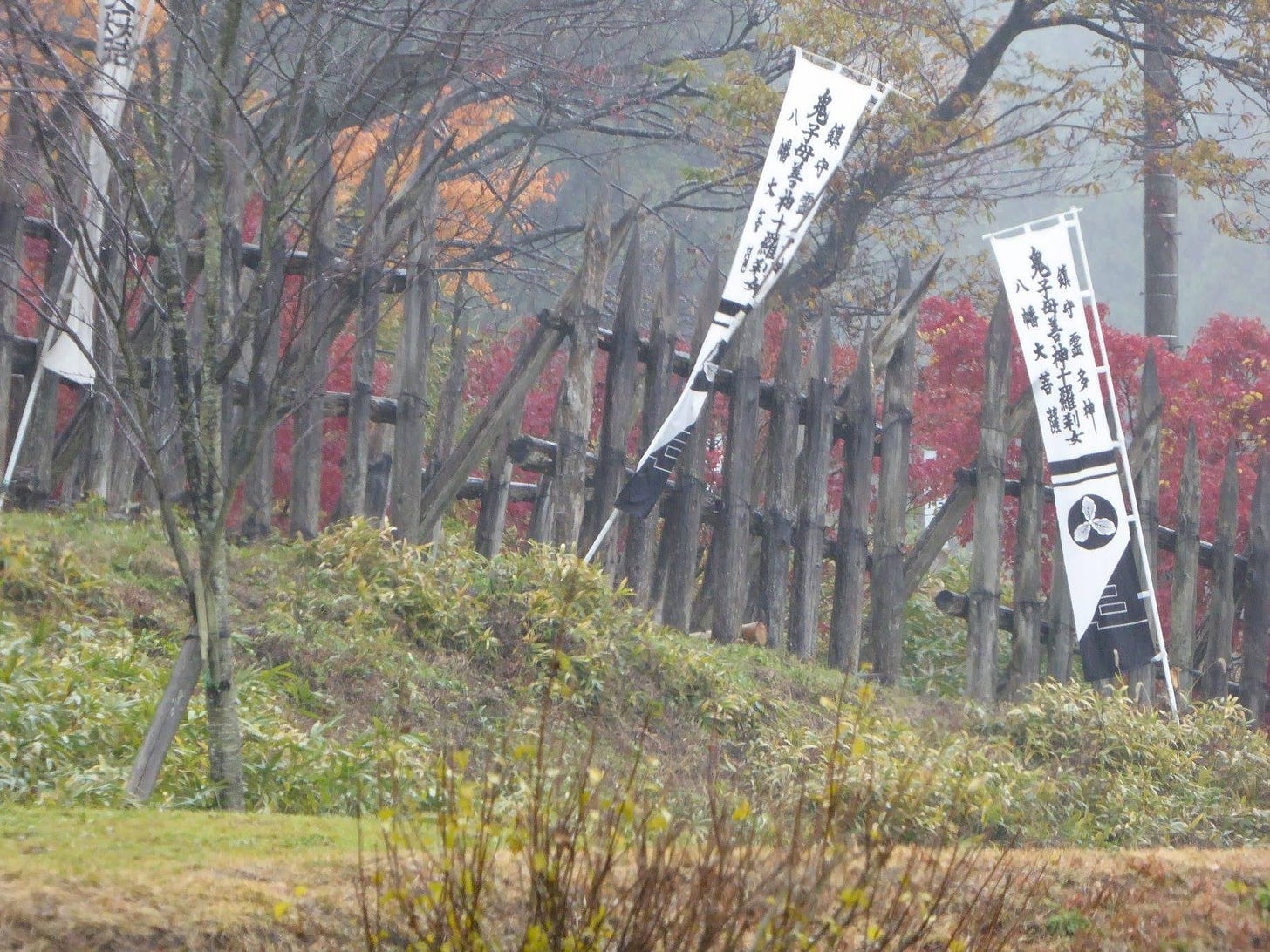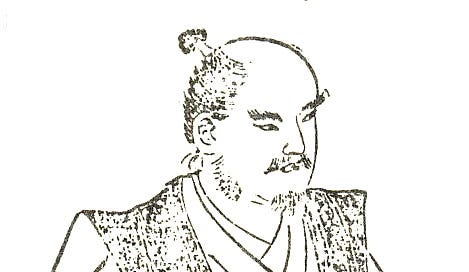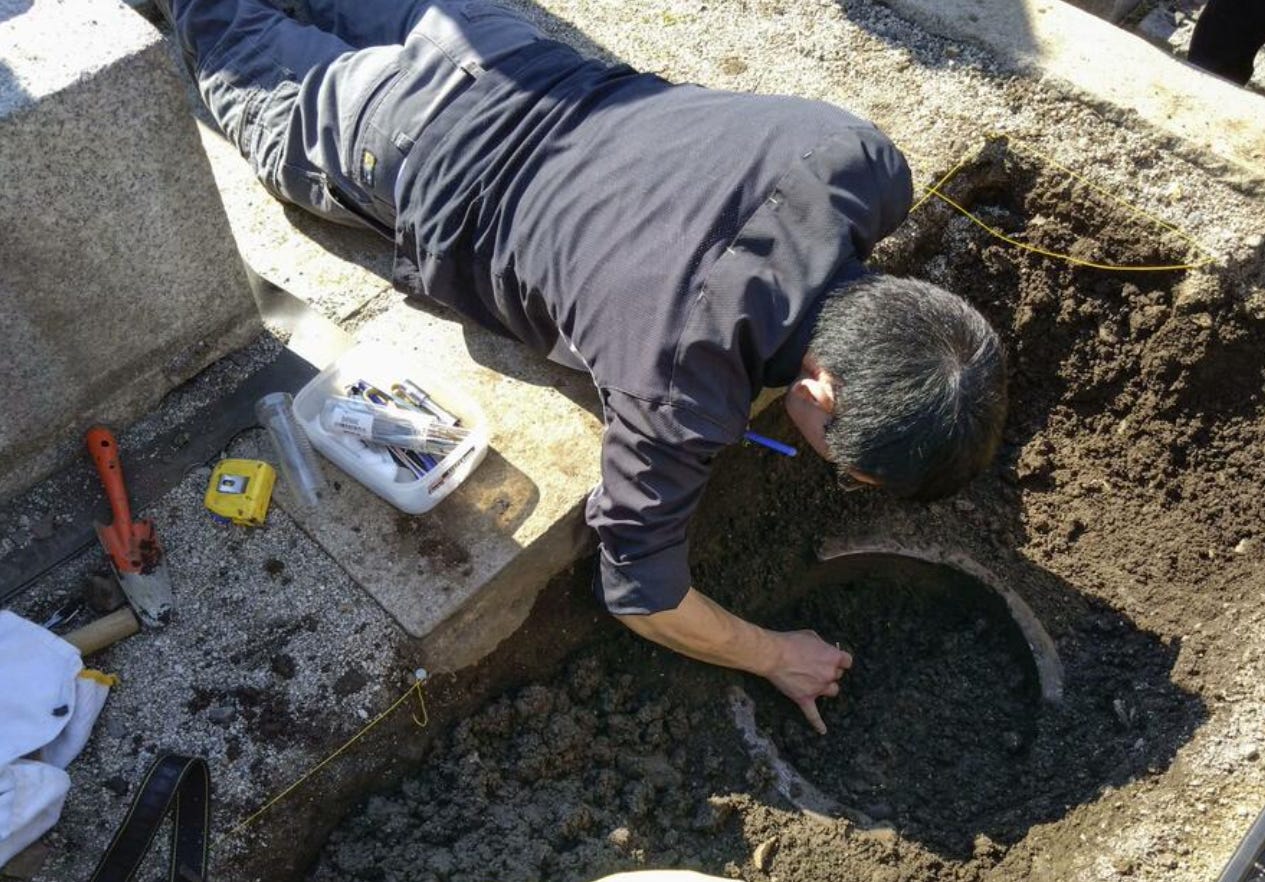Shima Sakon’s Grave Opened
Did he survive the Battle of Sekigahara? Human bones found during excavation of the grave of famous general Shima Sakon
Shima Sakon (June 9, 1540 - ??)
Although very little is known of this famous samurai, he was born in Heguri, Nara, his real name was Shima Kiyooki, and he was originally employed by the Tsutsui Clan. He had retired upon the death of his master, Tsutsui Junkei but was persuaded to come out of retirement and join Ishida Mitsunari at Sekigahara. In fact, Mitsunari had offered him half of his own stipend to secure his services. Indeed, at the western foot of Mt. Sawayama, in Hikone, the mountain on which Ishida Mistunari's castle once stood, are the remains of Shima Sakon's home and garden. The small wooden bukeyashiki, or warriors home, is not open to the public, as it is now situated within the grounds of a large temple, built in 1603, three years after Sekigahara and the death of Mitsunari. (The current 2nd head priest has told me he one day hopes to have the now dilapidated house preserved and possibly opened in the near future. )
Shima Sakon would play a major part in the battle, and was seen as the adhesive keeping the Western forces together. He supported the loyalists with just 1,000 troops and was stationed at the south eastern foot of the Western forces HQ on Mt. Sasao, just below Ishida Mitsunari's position, protecting him and the 6,000 Ishida troops. Shima and Gamo Bitchu’s 1,000 samurai taking the full brunt of the opposition forces, particularly those of the Eastern allied Kuroda.

Shima Sakon had personally witnessed one of his sons being killed in action as he watched, and Shima himself had been badly wounded numerous times by musket-fire early in the skirmish. Despite this, he returned to the thick of the battle time and again until his retainers lost sight of him.
At the end of the battle, Eastern troops were ordered to bring his head before Ieyasu. Although a task-force was sent to look for it, and a thorough search was made Shima Sakon’s head was never found.
There were three possibilities why. One is that the mangled bodies at the base of the small mountain were so badly injured and disfigured, it made identification difficult. Another story suggests that his second son may have taken his father's head from the battlefield that day and fled, handing the head to the chief priest at the clan temple for burial.
Yet another long held rumor was that Shima escaped from Sekigahara in the final moments of the Western force’s collapse, and lived until at least 1632.
June 5th (Wednesday) 18:47
According to reports in the Sankei Shimbun Newspaper and Kyodo news services yesterday (June 5th, Wednesday) human remains were found in one of the graves associated with Sekigahara hero, Shima Sakon’s grave in Kamigyo Ward, Kyoto City.
An excavation of the grave of Shima Sakon, a confidant of Sengoku warlord Ishida Mitsunari, known for his brave fighting in the Battle of Sekigahara in 1600, was carried out on June 5th at Kyobo-in, a subtemple of Ritsuhon-ji Temple (Kamigyo Ward, Kyoto City). While Shima is said to have been killed in battle at Sekigahara, his body has never been found, and there have been several theories about his whereabouts after the battle, including that he survived. During the excavation on this day, several human bones were found, and the head priest Miki Tendo said, he felt “Grateful that the bones were found." Further tests of the bones will clarify the situation.
According to the head priest Miki, there are about five graves of Shima throughout the country, but the gravestone at Kyoho-in is the only one with the word "burial" engraved on it. Kyoho-in has Shima's grave plaque and death register, which suggest that Shima died in 1632, 32 years after the Battle of Sekigahara. Head priest Miki also emphasized that there are remaining testimonies that Shima was still alive in Kyoto after the Battle of Sekigahara.
The excavation was carried out in conjunction with the restoration of Shima's gravestone and the construction of a building. On this day, prior to the investigation, those involved put their hands together in prayer while head priest Miki recited sutras in front of the grave. Afterwards, Professor Ishigami Hiroyuki (Professor of Early Modern Archaeology) of Kyoto University of Arts and others, who cooperated with the investigation, dug the soil with a shovel and carefully carried out the work. A jar was found about 20 centimeters below the surface, and a skull, pelvis, and other bones were found inside. Based on the condition of the bones, they appear to belong to an adult over 18 years old. Professor Ishigami said, "(The bones) have been preserved in very good condition."
There are few historical documents related to this much admired warrior, and much about his true character remains a mystery. The Kyoho-in and related organizations will continue their investigations, aiming to unravel the legend of Shima Sakon's survival.
Read more about Shima Sakon and the Battle of Sekigahara in my book, the most detailed non-fiction account of the battle in English, available from all booksellers, but faster and cheaper direct from the publishers: https://www.pen-and-sword.co.uk/The-Battle-ofSekigahara-Hardback/p/19269
Original sources include: https://news.yahoo.co.jp/articles/9358ea5ed8ecc9e6dfa02d1180c57cbe6642c1f6/images/000










Are they likely to be able to establish definitively whether or not the remains are his?
History being made (discovered). Its interesting that Sakon is always portrayed in games of the genre like a great warrior that Mitsunari did not derserve by his side.
Also, i remember reading once that besides getting out alive at Sekigahara, he even attended Mitsunaris execution (with no proof, of course).